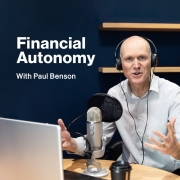With the cost of housing continuing to climb, in addition to the rising cost of tertiary education, many parents and grandparents are worried about what the future holds for the young people in their lives.
Last week Michael contacted me. He has a young daughter and was thinking of starting an investment for her, where he’d perhaps tip in $25 per week, so that when she was a young adult, there’d be a pool of money to get her off and running.
He’d seen a lot written about ETF’s so he figured that must be the way to go. But his initial enquiries weren’t bearing much fruit and so he reached out to me, to establish whether there was something he was missing. Why is it so hard to start investments for children.
The first barrier Michael found was that he couldn’t actually establish an investment in his daughter’s name. I confirmed that there’s two reasons for this.
One is because, to establish an investment, whether that be buying shares through a broker, or into a managed fund, you are engaging in the world of contract law, and contracts can’t be enforced on minors.
Now it may be possible in some instances to transfer investments across to children whilst under age 18 after purchase, but that then brings us to the second reason why investments in your child’s names is problematic – Minor’s tax. This is a penalty tax regime designed to prevent wealthy parents from hiding assets in their children’s name to avoid tax.
Kids can earn investment income of $416 per year without a problem so basic bank interest is not an issue, but once they go over this threshold, they are taxed at an amazing 66 cents in the dollar! This drops to a not much better 45% when their income exceeds about $1,300.
So ownership wise, when investing for children, the investment will likely need to be in an adult’s name – usually one of the parents (could even be in both names). And the adult owner will need to include the investment income, and hopefully capital gains, on their tax return. Given this, it would be sensible to have the investment in the name of the parent likely to have the lowest income, since this will result in the lowest tax payable.
Most investments will allow you to put a designation on the account which is like a tag, so you might have “Jane’s investment”. These designations have no legal or tax impact, but they help in identifying investments.
If these tax consequences are a significant barrier, most likely because both parents earn incomes of over $80,000, then another solution to investing for children is to use Insurance Bonds, or a derivation of them, Child Advancement policies.
Insurance bonds are a little like super funds, but without the restrictions of access to your money. Insurance bonds pay tax within the bond (at 30%), so you don’t need to include them in your personal tax return.
If you hold them for 10 years or more, then when you withdraw the funds – to for instance gift to your daughter so she can buy her first home – there is no further tax to be paid. This is quite different to a regular investment in one of the parents’ names, where upon sale, Capital Gains tax will be payable (assuming there has been growth of course).
The investment options are quite wide within insurance bonds, so just like within super, you can choose the Growth or Balanced options, or individual asset classes like Australian shares or International Bonds.
If you are saving specifically for education purposes, Child Advancement policies, which are a version of an Insurance bond, can be very helpful. These enable you to claim back the 30% tax paid within the bond where you can demonstrate that withdrawals are being made to fund education expenses. You do this by providing the receipts when you withdraw the funds. Acceptable expenses are quite broad – school uniforms, books, fees, music lessons, and plenty more. And the expenses can relate to all levels of education, including tertiary education.
Products vary quite a bit in this space, so just be sure to have a good read of the product brochure so you understand exactly what you are getting.
Whichever ownership structure you decide is right for your child’s investment, one final note is that whilst ETF’s have many great applications, regular savings plans are not one of them. In Michael’s case he wanted to add to his investment on a regular basis. To do this with an ETF, you have to buy the shares in the ETF through a broker, and that means every time you want to add to the investment, you have to pay brokerage. That’s likely to be around $20 per trade, which will really add up if you want to add, say, each month.
You’re likely to be better off using a managed fund (or an insurance bond as per above), as these will typically have regular investment plans where you can instruct the fund to deduct a specific amount from your bank account each month and add it to your investment. I’ve not seen a fund charge a fee to do this.
The ongoing management fees within managed funds are usually higher than an ETF, so it could be that you switch money across to an ETF once it builds up to a significant sum. There are tax consequences to this though, so this is something worth getting some advice on.
Well I hope that has helped you move forward with your investment plans for your young one. The keys points when considering investing for children are:
- The investment will need to be in the name of an adult, probably a parent.
- If both parents are likely to earn a reasonable income, it might be worth exploring the use of an Insurance Bond.
- And if the purpose of your savings is to fund education expenses, then you should look into child advancement policies, which are a specific type of Insurance Bond.
Important Information:
This information is of a general nature only and has been prepared without taking into account your particular financial needs, circumstances and objectives. While every effort has been made to ensure the accuracy of the information, it is not guaranteed. You should obtain professional advice before acting on the information contained in this publication.
An edited version of this article originally appeared in Money Magazine.

Paul Benson can be found on the podcast Financial Autonomy, and is a regular contributor to Fairfax.











